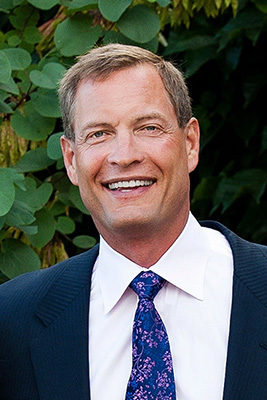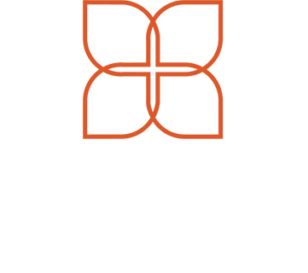Silver Linings: How COVID is Accelerating the Next Evolution in Senior Healthcare

Silver Linings: How COVID is Accelerating the Next Evolution in Senior Healthcare
 By Rick Miller, Founder and CEO of Avamere Health Services
By Rick Miller, Founder and CEO of Avamere Health Services
Whether you’re 28 or 82, what’s happening right now in the senior care industry will likely affect your quality of life at some point––physically and emotionally. That industry is at a critical inflection point and the decisions we make right now, will determine how we all age into our senior years.
In this Aging Right blog we’ll pick up on our conversation from last week with one of the most respected voices in senior health services, Rick Miller. Miller is former Chair of the American Health Care Association (AHCA) and the founder and CEO of Avamere Health Services.
After reading this, we think you’ll breathe a sigh of relief Miller is out there battling to make some changes so you can age right.
Q: Rick what’s been the biggest Aha! moment for you and the healthcare industry during the last 18 months?
A: A couple of things stand out: First, we have to accelerate advances in home and community-based care solutions to keep seniors home or to return them home more quickly. We can do that by blending new and evolving technologies with traditional home and home healthcare services.
Second, we must evaluate flawed, traditional capital allocation strategies. We spend too much on overhead and property leases for antiquated buildings and equipment. COVID has shown me our industry needs to shift our cost structure to support higher direct care costs (staffing, wages, benefits and training) and for improving safety within our buildings.
The skilled nursing industry is at a critical inflection point. We’re moving from a social/custodial model to a highly complex, clinician-led, medical model. In my opinion, continuing to blend long term care and short stay services in skilled nursing facilities does not work and will be rejected, completely, by adults today and in the future. Long term care and short stay observation and rehabilitation are two separate models and the future of skilled nursing facilities has nothing to do with long term care. It must focus on short stays. For operators who don’t embrace this, their failure is imminent.
This evolution in nursing facilities has been underway for years. COVID is just accelerating it.
Assisted living came around about 30 years ago. Its advent allowed low acuity older adults to move out of and avoid nursing facilities. In this same time period, we’ve also seen–with the advent of community-based memory care facilities–that most Alzheimer/dementia care residents transition out of locked units in skilled facilities. This was the result of collaboration between regulator and providers. I think we will see more of this. Now the next step in this evolution of skilled nursing is to find ways to move the long-term care population out of these facilities and into their homes or other community based options. Hospital and skilled nursing-at-home-service models will likely play a significant role in the evolution and reduced utilization of skilled nursing facilities.
What COVID has pointed out is that we have a duty and opportunity to broaden and integrate our scope of services and better align our product and service offerings with the evolving needs and expectations of those we serve. Older adults want to age right at home. Someone is going to get it right; it might as well be us.
Q: Who else do you need to come to the table to make changes?
A: We have heavy Medicare Advantage influence in our markets so those plans come to mind as our AgeRight PAC Network figures out how to improve our value proposition to them and other partners. We need to better understand what they need from us. For real and sustainable change to happen, we also need physicians, acute care, behavioral health regulators and policy makers at the table. The AgeRight PAC Network is a great platform for them to learn from us, for us to learn from them and an opportunity for us to get it right together.
Besides improving our value proposition there are a few other important considerations: We need to answer the age-old question, what is quality and how much does it cost? We need to address the goals of new and enhanced models at lower cost, with better outcomes and higher quality. The bottom line is, when you bring the right people to the table, you see how new models of care could work to create real change. (In the next Aging Right blog, you’ll hear from two leaders in healthcare, a physician and an insurance expert.)
Q: What’s an example of a new model of care?
A: Think about how a traditional nursing home looks and operates. Now think about a campus where you have an urgent care center; physician offices and clinics; a small, short-stay nursing facility with private rooms; an urgent care center; onsite ancillary support; and a home health and hospice agency. All these on-site services are clinically coordinated and technically enabled, with the intention of keeping seniors out of high-cost hospitals and traditional nursing homes. Add the ability to take risk and you’re getting closer to what I see as a more efficient, valued and perfected senior healthcare system.
How exciting is a model like that!
I want us to dream big and brainstorm to create and execute better models of care. But yes, it’s going to take providers, payers, regulators, politicians––everyone involved with the healthcare continuum to make this happen.
Q: So, is there a reason all the various parties who help us age, aren’t collaborating more?
A: Four things come to mind. First, market size. As America ages, the cost and opportunities relative to serving this segment of our population is becoming more apparent.
Second, as various senior care and housing options have been developed over the last couple of decades, there’s a growing interest and need now to figure out how to coordinate these options in a way that improves outcomes, enhances customer experiences and reduces cost. This gets back to the basic tenets of why we started the AgeRight PAC Network.
Third, technology. Rapid advancements in senior directed technology are opening opportunities not possible in the past, to coordinate and deliver more clinically complex care in home and community-based care that has traditionally been delivered in hospital and nursing facility settings. In addition, this technological revolution is providing us with the tools we need to manage risk and provide population health in ways we haven’t considered in the past.
Finally, the growth of Med Advantage plans is driving creativity and entrepreneurial approaches to senior healthcare that were not available under the traditional Medicare fee for service system.
Q: You also have an aging population with higher expectations of the healthcare system and how they want to be treated.
A: Exactly! And seniors vote more often than any other population, so their concerns are going to become of greater interest to politicians. I think COVID has highlighted that you must protect, care for and acknowledge the needs and expectations of seniors. This is both a need and opportunity for us all to get it right.
Q: Better wages, training, creating a desired career path and technological innovation are among your biggest goals in senior care. We demand it in other fields like day care and food handling, so how do you get people to insist on that for our seniors?
A: Don’t we want to know the people taking care of our loved ones are being paid meaningfully? That they’re trained right, doing what they want to do and they’re using the best technologies to deliver services? We have that in other industries, why is that not applicable in the senior care delivery system?
We should insist that the entire workforce–those who have committed their lives to take care of seniors–be compensated for the value they bring to the job and the difference they’re making in the lives of our nation’s most aged, deserving and vulnerable. That they enjoy family wage jobs and feel pride and success in what they do. We’re critically short staffed right now. We need to pay more––much more. How can we attract more well-trained and committed teammates, more consistently, when our industry has always been known for low wage jobs? This is one of the issues this network is taking on.
Q: This sounds like a healthcare revolution.
A: At the end of the day, our life’s work will be meaningless if we don’t admit the current system is broken. We need to start collaborating. Yes, let’s lead a revolution! Someone is going to get it right; it might as well be us. The amount of disruption will cause widespread failure for those not wanting to be part of the change. To me this is as clear as the typewriter: if you hang onto our old nursing home model, you’re going to be out of business. Nursing homes, as they exist today will not exist in the next decade or two. It’s kind of like the Berlin Wall––people finally said enough. Seniors know what they want. We either deliver that or they will find others to do it for them.
I’m determined and I’m optimistic we can create a new model. If you’re any part of the senior healthcare business––payer, provider, policy maker––I invite you to the table. Join us here Let’s start talking! Let’s do this!
What’s next in Aging Right?
Rick talked about the need to bring more of the payers to the table. In the next Aging Right blog, you’ll hear from two experts in the field and what they say must happen to deliver a new standard of healthcare.


